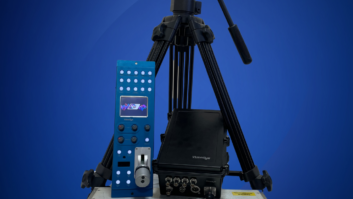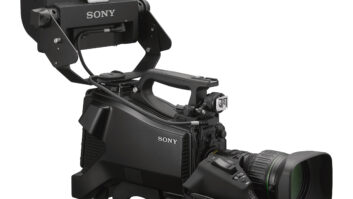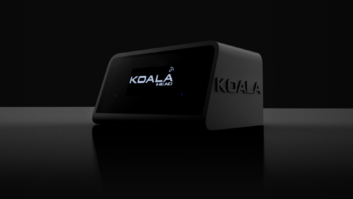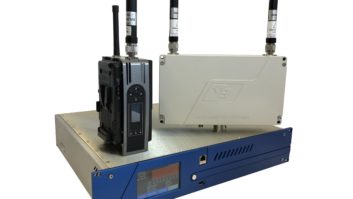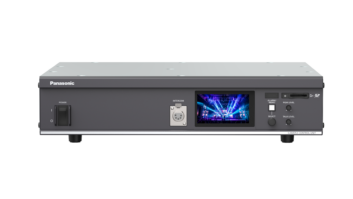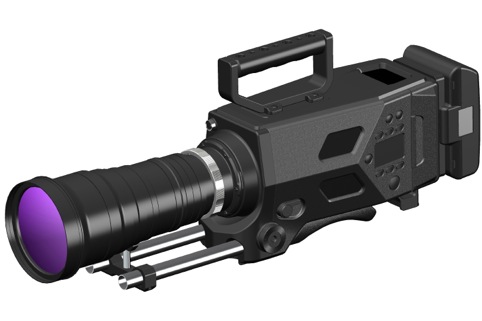
JVC showed four 4K concept cameras at NAB, and is now looking for user feedback to help develop them further.
It recently released a free firmware upgrade (v.3.0) for its GY-HM600 and HM650 camcorders that was based on customer feedback, adding 1080p 50Mbps H.264, an Enhanced Auto Focus System with focus area selection, and Advanced Streaming Functions with additional bitrates in various resolutions.
“We’d like to do the same thing with our upcoming 4K products,” said Gustav Emrich (pictured), European product manager, JVC Professional. He hopes that users will download its 4K questionnaire (Excel format) with supporting documents and pdfs
(from http://jvcwebseminar.3d-special.de/index.php?id=5), and tell him what they think should be the priorities for each of the new cameras.
JVC bought a sensor company, AltaSens, “and now we are able to create our own sensors,” the first of which is the new Super35mm CMOS chip being used in its 4K cameras, but he hopes that users will tell it exactly what they need from the various possible models.
The biggest of the concept designs is the GY-LSX1 Elise (although all the names are also subject to change), a shoulder-mount camcorder, with PL-mount lens. At the moment it is likely to offer 4K (4096×2160) recording using H.264 4:2:2 from 24p to 60p and HD recording up to 120p, plus 720p up to 240p, as well as 4K 50/60p live output (via 4x HD-SDI connections). It will also have “advanced IP connectivity” similar to the HM-650, and live streaming capabilities, probably at HD, but potentially at 4K.
To keep it affordable, JVC wants to stick with the SD card format, but using the latest, fastest, UHS-1 U3 cards rather than picking a more expensive proprietary format that wouldn’t be so readily available. However, Emrich is open to the possibility of adding a second recorder, whether SSD or hard drive, perhaps in a dedicated slot, if that is what people want.

The version shown at NAB was a mock up, with a slightly unusual looking design that keeps the buttons away from the face while on the shoulder, but that is also subject to change depending on the feedback.
There is also the entry-level GY-LSX2 handheld concept, which uses the same sensor, but with a Micro Four Thirds lens mount to keep costs down. It is likely to be limited to 24-30p in 4K (with 24-120p in HD), and will also have a dual codec system so that users can record HD and SD, or HD and proxy (or a single 4K recording), and offer simultaneous recording and streaming.
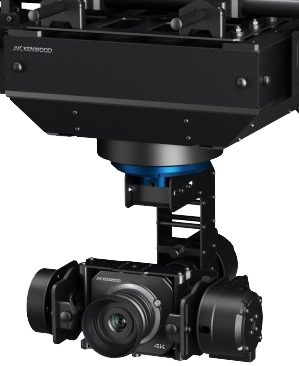
JVC was the first company to offer a 4K handheld camera, the GY-HMQ10, however, it recorded four separate files on to four separate SD cards. “All these products will record on a single card, as a single file,” at about 150Mbps, which is much easier for editing, explained Emrich.
The LSX2 concept is more finalised than the other potential models, “but still you can give us your feedback,” he said.
The GW-SPLS1 is a 4K mini camera system, with remote head connected to a combined CCU/recorder/viewer, with 4K 24-60p and HD 24-240p recording.
This will also have the MFT lens mount, and is likely to come with a 5m to 20m cable, although people have already been asking if it can come with a fibre connection for longer distances, so that is also a possibility.
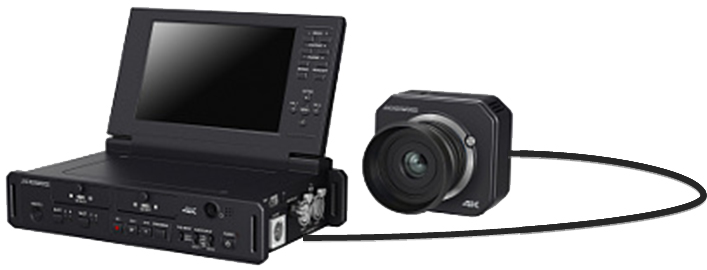
The recorder is likely to have 4x HD-SDI output, plus two 4K media slots (for the faster UHS-1 Class 3 cards) and two HD media slots (for SDHC/SDXC cards), and could also have a built-in hard drive. The concept was also shown with a 7-inch LCD HD display. The recorder may also be available as a separate unit.
JVC has also developed its own gyro-stabilised gimbal, with the 4K mini camera built in (the GW-GBLS1), which could be used with quad copters, studio robotics or jibs, etc.
It will have remote control via IP, to set operational speeds (60º per second), pan (+/-180º), tilt (-120º to +45º) and roll (+/-180º). It will also support active lenses. It should offer 4K 24-60p and HD 24-240p recording, as well as HD live streaming (for high-resolution flight control – via 2.4GHz or 5GHz WiFi). Control could be via a joystick unit (as demonstrated at NAB), a touch panel, or even a smartphone, depending on feedback.
Some users have wondered if this could become a full pan/tilt/zoom camera, or a box camera, and if enough users would like that, JVC could offer those variants too.
Of course, as Emrich concluded, the more features users ask for, the higher the cost. “So, we must be realistic.”


